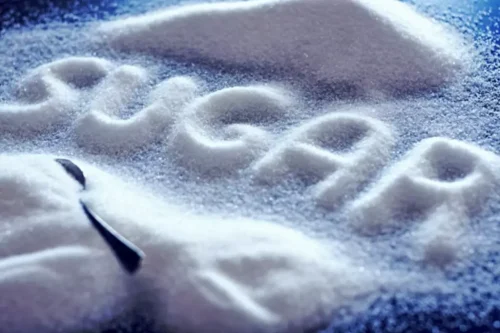
Projections from mPFC to the striatum have been implicated in mediating specific aspects of drinking behaviors [101–103]. These projections have been targeted to exert bidirectional, long-lasting control of alcohol drinking [103]. Furthermore, dysregulation of striatal function can produce pathological drinking behaviors. For instance, manipulations of striatal dopamine D2 receptors (D2Rs), adenosine 2A receptors, or activity of fast-spiking interneurons, among others, alter excessive drinking behaviors [104–106]. Further, disrupted GABAergic transmission in this region is also linked to alcohol-induced cognitive impairments [107]. Together, altered excitability of striatal neurons and upstream cortical regulation of striatal activity influence a diverse range of drinking behaviors, which likely can be attributed to distinct striatal output circuits [108].

The dopamine theory of addiction: 40 years of highs and lows
- Disulfiram administration helps patients learn non-drinking behaviours and the ability to exercise self-control.
- Our knowledge of ethanol use and abuse thus relies on understanding its effects on the brain.
- 4N-methyl-d-aspartate, or NMDA, is a chemical that specifically activates this glutamate-receptor subtype.
- There is evidence of a link between serotonin deficiency, impulsivity and drinking behaviour which may explain the role of SSRIs in suppressing alcohol reinforced behaviour in some alcohol-dependent patients.
EtOH exposure causes changes in rodent brain GABAAR subunit composition and function, playing a crucial role in EtOH withdrawal symptoms and dependence. We showed [81, 131, 132] that CIE treatment and withdrawal results in decreased EtOH-enhanced δ subunit-containing GABAAR-mediated extrasynaptic current (Fig. 2a) correlated to down-regulated δ subunit (Fig. 2b). This is accompanied by increased EtOH sensitivity of GABAAR miniature postsynaptic currents (mIPSCs, Fig. 2a) correlated with hippocampal α4βγ2 subtypes including up-regulated α4 (Fig. 2b), and synaptic location demonstrated by post-embedding immunogold labeling electron microscopy (Fig. 2c-d). Other lines of research related to alcohol withdrawal reinforce this model of alcohol-related changes in DA.
Behavioral tasks

Studies elucidating the underlying mechanism of action of the complex dopamine–alcohol interaction have been conducted. On the other hand, local administration of the dopamine D2 receptor antagonist, sulpiride, how does alcohol affect dopamine into the anterior VTA did not alter alcohol nor sucrose intake in high‐alcohol‐preferring rats [142]. It should also be mentioned that accumbal dopamine D1 receptor might regulate alcohol‐induced reward.
About the journal
Indeed, intra‐NAc infusion of a dopamine D1 receptor antagonist (SCH23390 or ecopipam) decreased alcohol‐mediated behaviours in rats [141, 143]. Collectively, these data indicate that the dopamine D2 as well as D1 receptors within the NAc regulate https://ecosoberhouse.com/ alcohol reinforcement. As mentioned above, it has been hypothesized that the chronic intake of alcohol induces a dopamine deficit state in the brain reward system and that this dysfunction may drive craving and relapse to drinking [101, 18, 19].
- Faster dopamine uptake in the female subjects would have the net effect of decreasing the duration of neuromodulation produced by this transmitter.
- Researchers currently are trying to determine the exact mechanisms underlying the alcohol-induced changes.
- Our findings support prior work indicating the importance of dopaminergic signaling in salience network FC [101, 115], and supporting a potentially key role for this functional network in AB [116].
- These animals exhibited reduced intoxication in response to a single dose of alcohol compared with normal mice, indicating that 5-HT1B receptor activity produces some of alcohol’s intoxicating effects.
Level 6: the role of post-translational modifications
- An example of such interaction occurs in Purkinje cells, a type of neuron found in the cerebellum.
- The D1 receptor binds with excitatory G protein and activates adenylate cyclase (AC) via Gs; AC catalyzes the production of cAMP and cAMP regulates cAMP-dependent protein kinases to open calcium ion channels.
- When this becomes persistent due to the CIE treatment, this can be termed ‘aberrant plasticity’ [109].
- For comparison of drinking levels across 20%, 30%, 40%, and 50% alcohol concentrations (Figs. 3, 4), 20 rats of each sex were tested; for most rats, two drinking sessions for each alcohol concentration were assessed in randomized order across rats and alcohol concentrations.
- High EtOH sensitivity (≤10 mM) has also been reported in recombinantly expressed α4/6βδ receptors [85], with significant β3 selectivity [86].
- To date, the mechanisms for how excess EtOH consumption leads to alterations in the human brain that produce alcohol dependence remain murky.